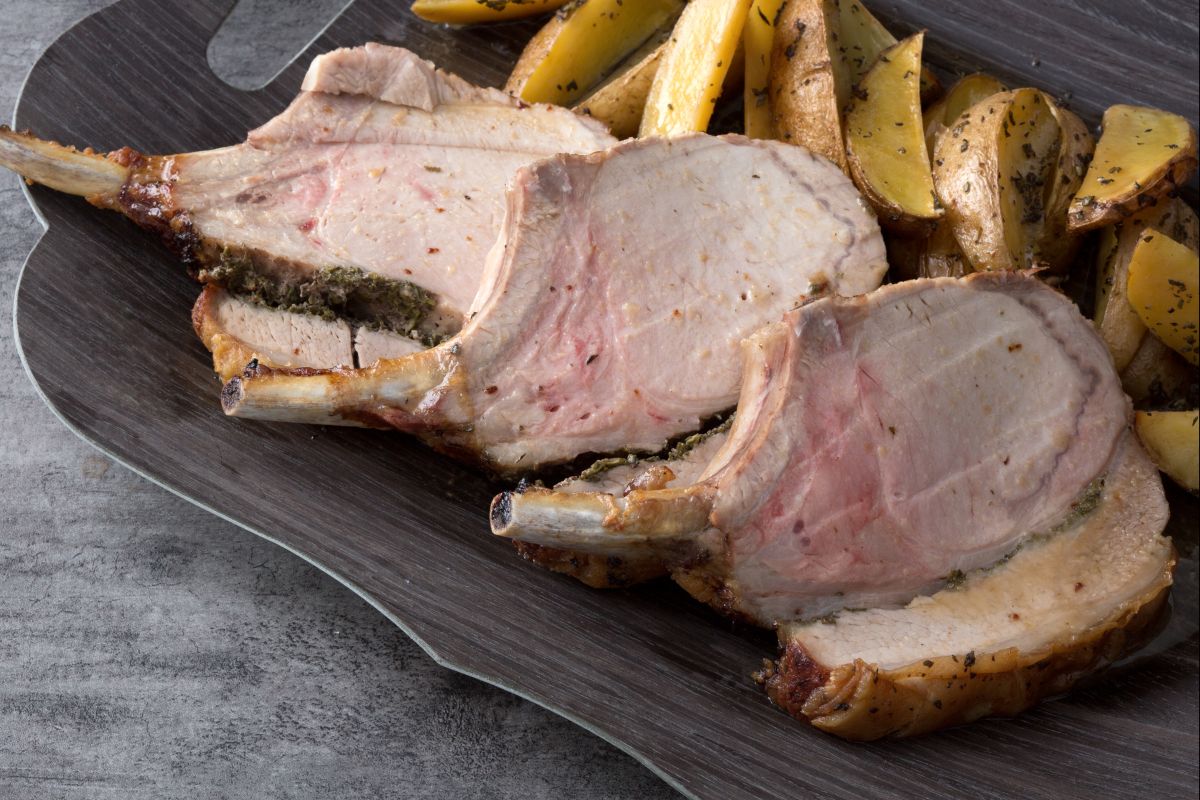English Roast Beef
- Easy
- 1 h 20 min
- Kcal 173

When talking about Sunday lunch, the first thing that springs to mind is roast, often pork, or better still, pork loin! You will have guessed that today we are presenting a classic and timeless recipe: arista, or pork loin roast. Apparently the Italian name for this dish originates from the exclamation of a Greek cardinal, who after tasting it in Florence, exclaimed "Aristos", or "the best", and from that moment on, the Florentines referred to this cut of meat using the same word. Pork loin is ideal cooked in a pan, just like in the recipe with milk and oven roasted too, but you need to pay attention to a few and simple tips on how to keep the meat succulent! We invite you to discover all the secrets to preparing a succulent pork loin roast with Chef Cesare Battisti, who puts the fundamentals of his cuisine to practice in this dish: the importance of the ingredients and the clarity of flavors.

To prepare pork loin roast, start by taking a part of the aromatic herbs: thyme, rosemary and sage (leave the remaining part to one side) 1; coarsely chop the herbs on a cutting board 2. Now place the pork loin on the cutting board and cut a flap into it using a sharp-edged knife 3,

without entirely detaching it from the meat cut. Now open it out 4 and place the previously chopped herbs inside 5; season with salt 6 and pepper.

Close the flap and tie the roast, to hold it together and give shape to your meat cut. Run a piece of kitchen twine under 7 and then over the meat lengthwise; be sure to tie both ends with a knot 8 and leave a part of the twine slightly longer than the other. Run the longer piece of twine back to the opposite end and tie one last knot so that the twine does not come undone. In this way the casing will stick nicely to the meat cut. Now continue to cage the meat by running the twine up and down the sides 9.

After running the twine around the last part 10, form a loop and hold it down with your fingers. Run the end of the twine through the loop a couple of times, then the meat, tighten and tie the last knot 11. Once you have tied the meat, you can cook it. Heat a drizzle of oil in a non-stick pan and add the pork loin roast when hot 12.

Brown thoroughly on all sides 13 without burning it, to seal the pores of the meat, so that all the juices remain inside. When nice and golden, add the white wine 14, which will enrich the naturally sweet pork with a touch of acidity. Wait a few moments, then use a pair of tongs to place the meat cut in a baking tray; leave the baking sauce to one side 15.

Now thoroughly wash the potatoes 16 and dry them with a cloth. Cut them in half and then into slices, all the same size if possible 17. Place them in the tray 18 and add a little salt. You won't need to add any oil because as the pork loin cooks its casing will melt and flavor the potatoes. Bake in the oven at 355°F (180°C) for around 15 minutes.

In the meantime, finely chop the aromatic herbs you saved for later 19, then gently crush an unpeeled garlic clove 20. Once the 15 minutes are up, remove the meat from the oven, add the garlic clove and the aromatic herbs 21.

Pour the broth into the tray, around the meat cut 22 and place back in the oven at 355°F (180°C); you'll need a thermometer to know exactly when it is done. The temperature in the middle of the meat should be 143°-149°F (60°-65°C). Cooking times vary according to the size of the meat cut used, but it should take around 40-50 minutes. Remove the tray from the oven 23 and place the meat alone on a cutting board 24.

Cover with a sheet of aluminum foil 25 and leave the meat to rest for 3-4 minutes; according to the size of the meat cut, the temperature inside could increase by 36°-41°F (2°-5°C). In the meantime, reduce the baking sauce you left to one side on a low flame 26. Now untie the meat 27 and be sure to remove all the twine.

Cut it into slices, according to where the bones are 28. Now place the meat and potatoes on a plate and pour the baking sauce over them 29. The pork loin roast is ready to be served 30!